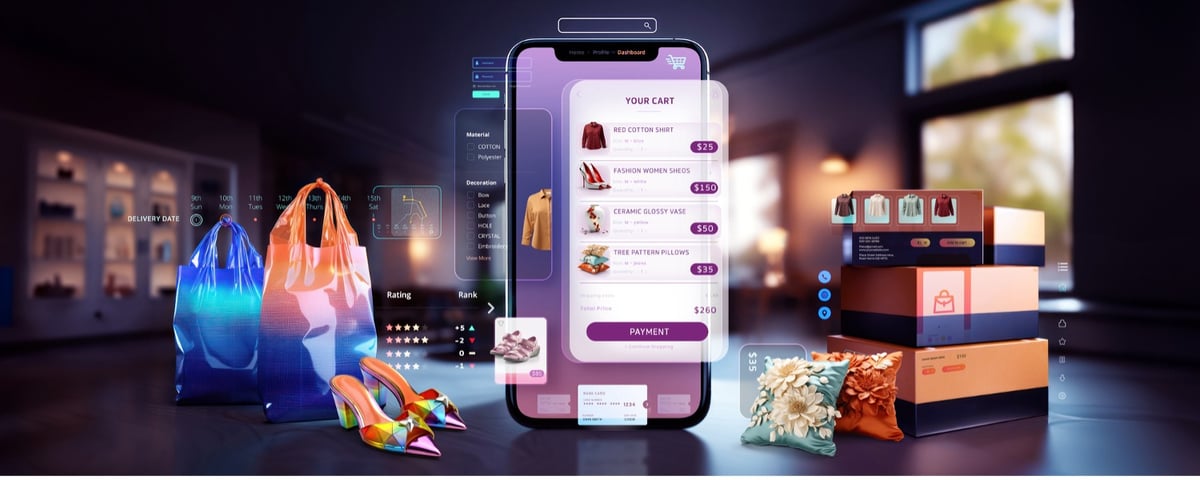Personalizing Your E-Commerce Experience: Best Practices

Let's talk about the thrilling journey of personalized buying experiences, where every click, tap, and scroll holds the potential to make or break a sale!
Nowadays, consumers have high expectations, and their attention spans are shorter than ever when making online purchases. They seek personalized interactions that make them feel valued as customers. With the rise of e-commerce platforms and the increasing prevalence of mobile shopping, competition is becoming more intense. This is especially true in New Zealand, where the digital marketplace is rapidly expanding to meet the demands of a tech-savvy population.
Based on a 2022 study, market research analysts projected the New Zealand e-commerce industry to expand USD$10,121.8 million in 2027. Such forecasts serve as a testament to the immense potential within the market and signal the need for businesses to stay agile and innovative to capitalize on these opportunities. It's an exciting journey ahead, and those who embrace change and prioritize customer-centric strategies are poised to thrive in this vibrant digital landscape.
Winning strategies for e-commerce personalization
As a marketer, you have mere seconds to capture the hearts and wallets of customers. You must stay nimble and adapt to the ever-changing tides of consumer preferences and technological advancements. Sure, implementing personalization may sound daunting, but it doesn't have to be. Follow these best practices:
- Get to know your customers inside and out
The foundation of any successful personalization initiative is having extensive knowledge of your customers. That means gathering as much first-party data as possible, such as:
- Interests
- Browsing and shopping behaviour
- Demographics
- Loyalty status
Of course, you'll need to do this in a privacy-compliant way without making people feel creeped out. The depth of these profiles directly correlates with your ability to understand preferences and tailor recommendations effectively.
Tools like mood boards and surveys are instrumental in gathering nuanced qualitative data. Mood boards capture aesthetic and emotional aspirations, while surveys offer direct insights into opinions. The more dimensionality you can add to customer profiles, the more personalized your outreach can become.
- Segment your customer base
Chances are your customer base isn't one homogenous group. You likely have subgroups of customers with common characteristics and needs that distinguish them from other clusters. Leverage the data and segments to direct personalized messages and offerings.
For example, you may have groups like:
- Budget shoppers: This price-conscious segment seeks out discounts, deals and bargains. Spotlight sales, flash promotions and bundle offers are aimed at stretching their dollars further. Use messaging like "Our Lowest Prices Yet!" and "Bargains Galore!"
- Brand loyalists: Shoppers who exhibit affinity for certain brands appreciate recognition and rewards for their devotion. Provide exclusive perks, early access to new items and VIP status. Make them feel valued for their repeat business.
- Impulse buyers: These customers decide on a whim, swayed by emotions. Captivate them with enticing images, compelling product descriptions, and high-incentive limited-time promotions that capitalize on spontaneous decision-making.
Creating specific experiences that align with these personas makes the shopping journey more resonant. Customers feel understood and catered to when you speak their language and recognize their needs. Segmentation allows personalization to be taken to the next level.
- Match content and recommendations to user context
Serving up generic content, product recommendations, offers, and messaging can quickly start to feel a bit out of tune. To steer clear of this, you must take into account various contextual signals to determine intent and develop aligned real-time responses. For instance, by tracking search queries, you can gauge where customers are in their decision journey. Someone who just searched "product reviews" has different needs than a repeat customer clicking through to repurchase.
So, how will you achieve this strategy? Here are they:
- Personalized product recommendations on e-commerce websites based on the user's browsing history and purchase behaviour.
- Display local weather updates or news headlines relevant to the user's location on a news website or app.
- Tailoring the timing and content of email marketing campaigns based on the recipient's time zone and past interactions with previous emails.
- Providing targeted advertisements on social media platforms that align with the user's interests and demographics.
- Offering location-based discounts or promotions through mobile apps when users are near a physical store.
- Customizing the layout and design of a website or app based on the device being used, such as optimizing for mobile or desktop browsing.
Pay attention to these situations and adjust how you reach out to people to build a stronger connection with them. It's like showing your target audience that you understand and respect their daily routines and feelings. And when you do that, they're more likely to stick around and keep being your loyal customers, ultimately increasing your click-through rate (CTR).
- Test, iterate, and optimize
Like any marketing initiative, you shouldn't expect a flawless personalized experience right out of the gate. Be prepared to test different segments, offers, product suggestions, and content to see what moves the needle on engagement and conversion rates. The beauty of personalization is you have clear visibility into the performance of each customized element. Monitor the data closely to double down on what's working well and swiftly eliminate what isn't.
As customer trends, interests, and economic factors shift over time, the dynamics of your personalization strategy will need to shift as well. Continually refine based on learnings to avoid stagnation. A/B testing and experimenting with new algorithms, data sets, and use cases are instrumental in scaling efforts over the long term.
Elevate your e-commerce venture
Prioritizing personalization pays dividends in an increasingly crowded e-commerce landscape. While the path isn't always straightforward, entering this venture with customer intelligence, segmentation, contextualization, and optimization best practices in place allows you to transform generic web traffic into loyal brand advocates.
